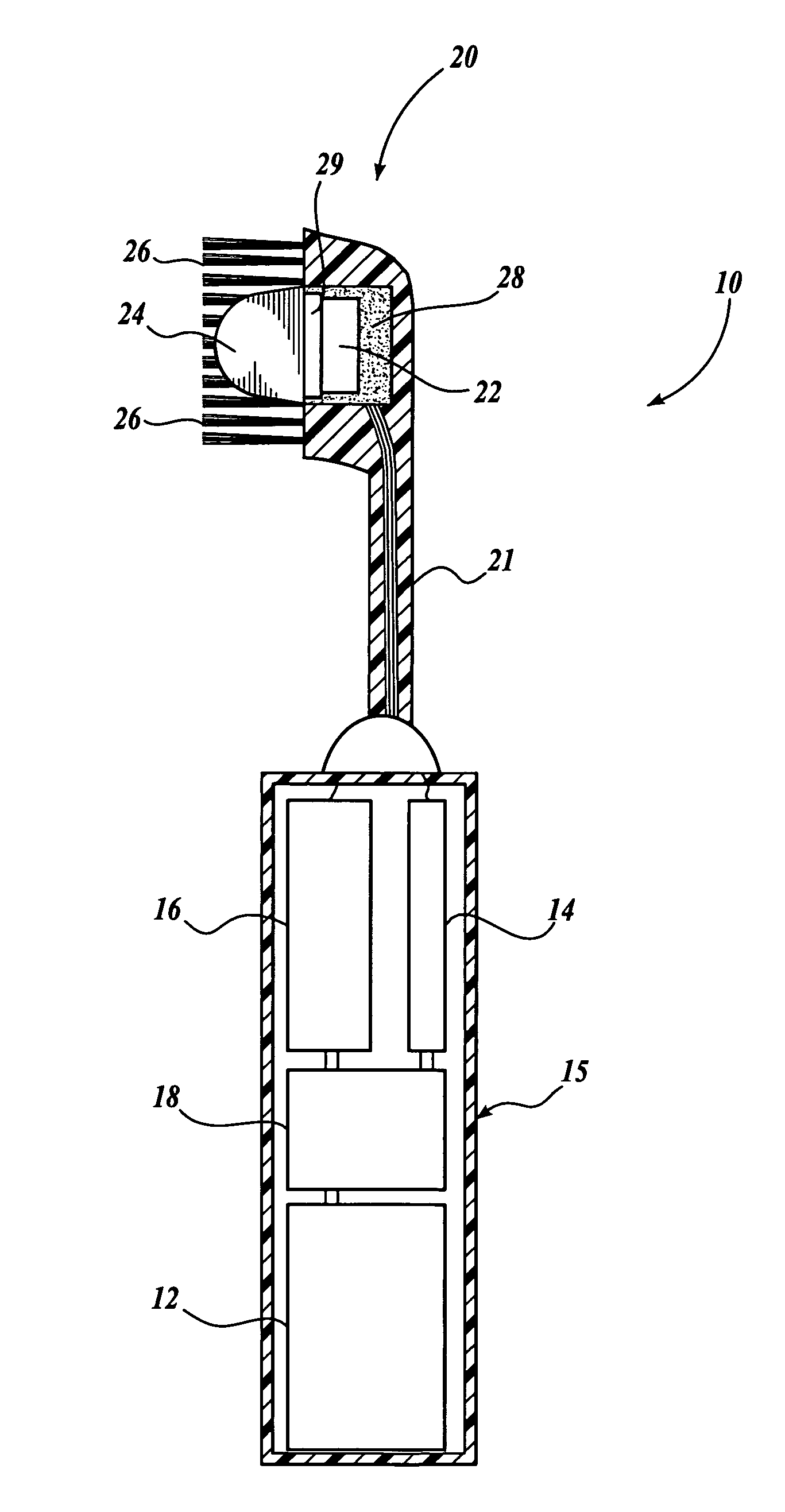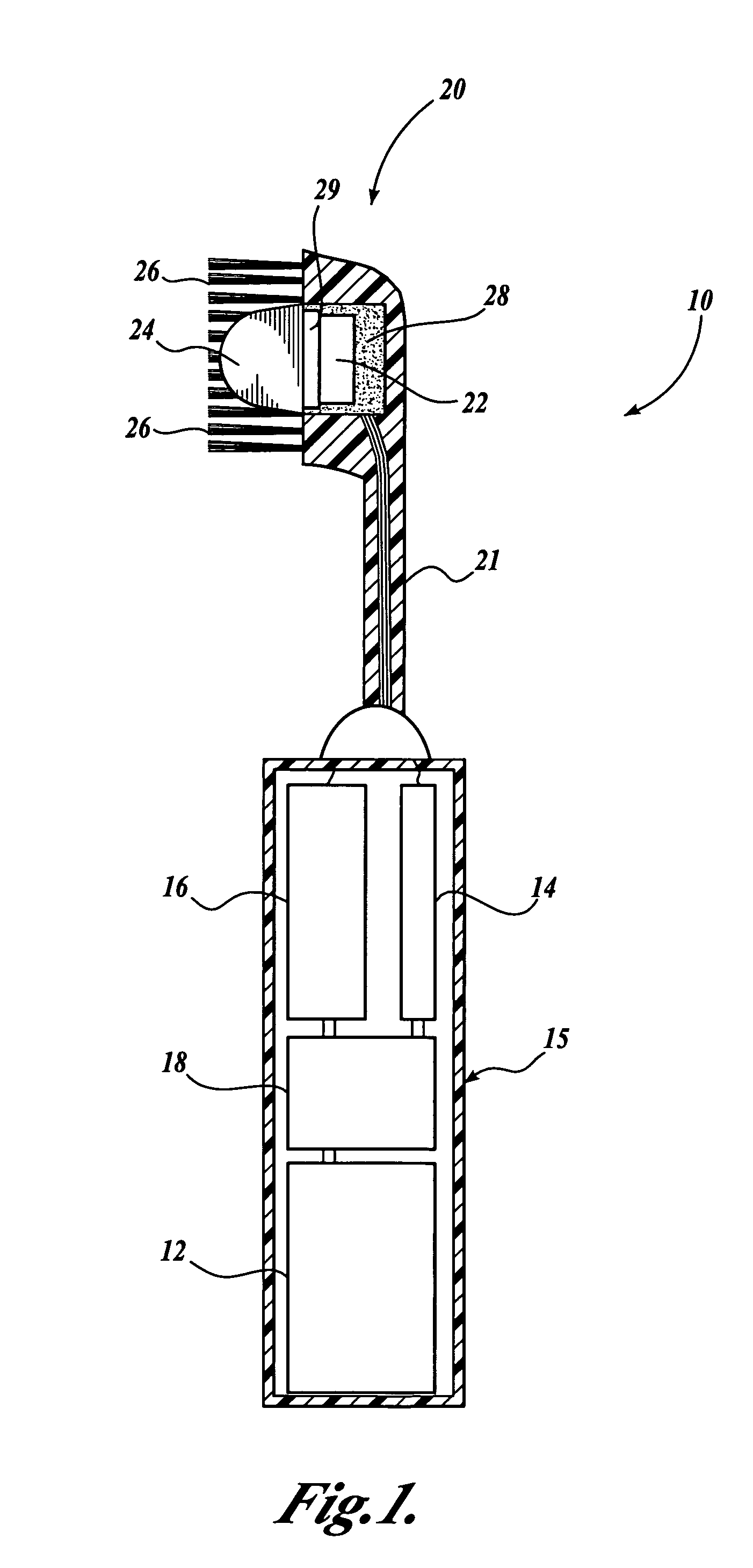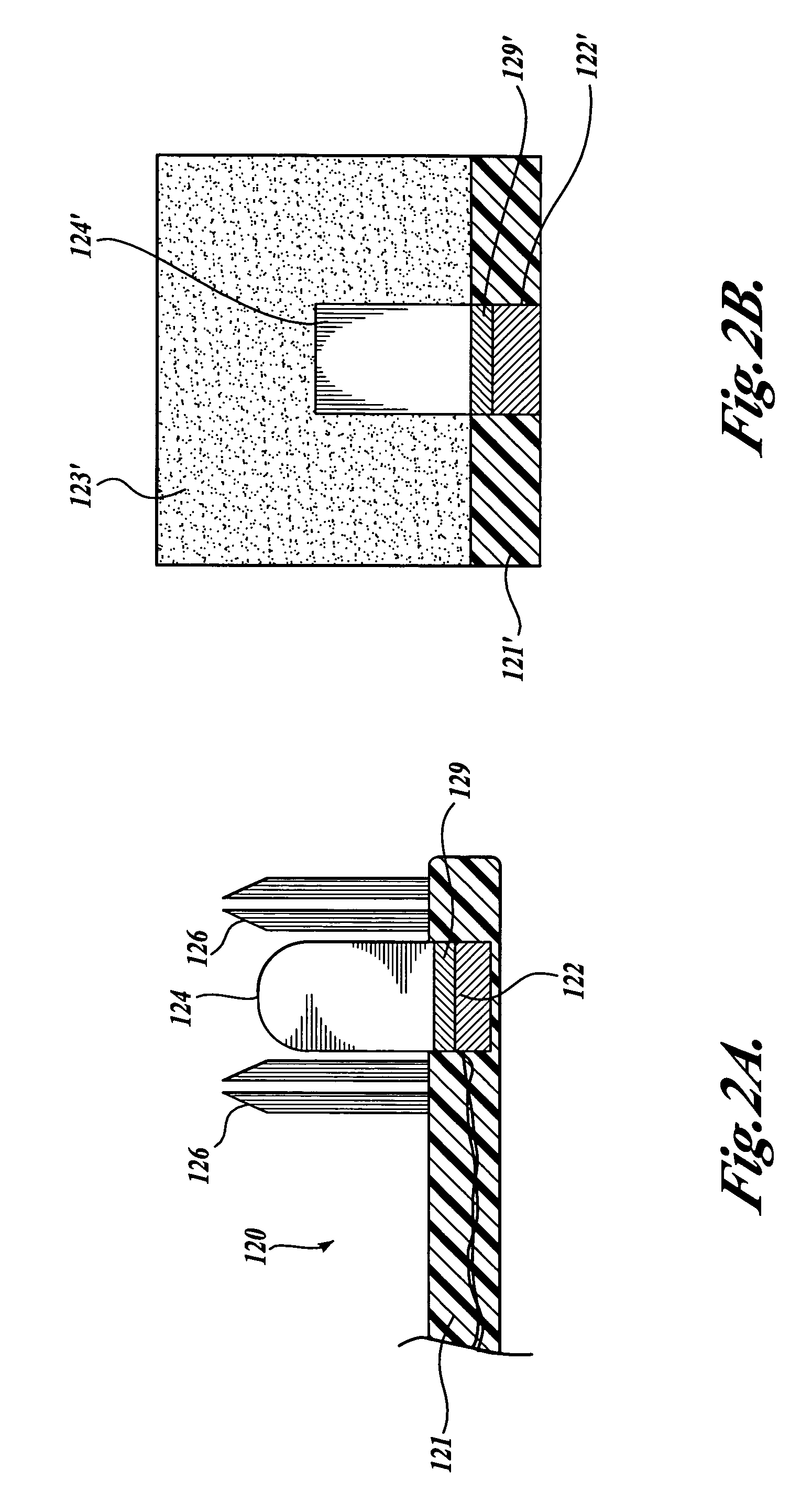Toothbrush employing an acoustic waveguide
a technology of acoustic waveguide and a toothbrush, which is applied in the field of toothbrushes, can solve the problems of toothbrushes falling short of toothbrushes that cannot exploit the formation of microbubbles in dental fluid for the purpose of facilitating plaque removal, and toothbrushes that cannot achieve efficient ultrasound wave propagation. achieve the effect of improving the loosening and removal of dental plaque, improving the user experience, and enhancing fluid flow
- Summary
- Abstract
- Description
- Claims
- Application Information
AI Technical Summary
Benefits of technology
Problems solved by technology
Method used
Image
Examples
example 1
Design and Construction of a Combined Sonic and Ultrasonic Toothbrush
[0117]Prototype power toothbrushes were generated by replacing internal bristle tufts of commercially available power toothbrushes with an ultrasonic transducer and acoustic waveguide. Ultrasonic transducers employed in these prototype toothbrushes had significant power output within the frequency range of about 150 to about 510 kHz that was sufficient to stimulate the formation of an acoustically significant bubble population susceptible to resonant stimulation by energy emitted by the ultrasonic transducer. A polymer waveguide was molded onto the toothbrush head in operable proximity to the ultrasonic transducer and positioned such that ultrasonic waves generated by the ultrasonic transducer were propagated and focused.
example 2
Ultrasonic Imaging and Plague Removal by an Exemplary Ultrasonic Power Toothbrush
[0118]This example discloses ultrasound imaging and plaque removal data collected for one of the prototype power toothbrushes described in Example 1.
[0119]In order to demonstrate the improved performance of a power toothbrush employing an ultrasonic transducer in combination with an acoustic waveguide, Doppler, and B-mode data were collected for a prototype ultrasonic toothbrush with and without incorporating an acoustic waveguide. FIG. 5A presents an ultrasound image of an ultrasonic toothbrush without an acoustic waveguide. Doppler data show fluid flow (within box) and B-mode data highlight acoustic backscatter (outside of box) at the bristle tips (BT) and bristle plate (BP) at bottom of bristles. FIG. 5B presents the same ultrasonic toothbrush with moving bristles powered by a sonic component. These data reveal that fluid flow (FF) beyond the bristle tips is not detectable even though the bristles ar...
example 3
Measurement of Physical Parameters of an Exemplary Ultrasonic Power Toothbrush Employing an Acoustic Waveguide
[0122]This example discloses measurements of physical parameters of an exemplary ultrasonic power toothbrush of the present invention.
[0123]In order to compare the effectiveness of various acoustic waveguide geometries, the transmitting pressures for a flat, unfocused elastomeric / silicone polymer wedge waveguide was compared to the transmitting pressures for a focused elastomeric / silicone polymer wedge waveguide. The plot of acoustic pressure levels at the tip of each acoustic waveguide presented in FIG. 6 demonstrates an approximately three-fold increase in transmitting pressure for a focused waveguide (˜1.5 MPa tip pressure) versus an unfocused waveguide (˜0.5 MPa tip pressure).
[0124]The absorption of ultrasound transmitted through a model dental fluid / bubble emulsion was measured as a function of ultrasonic frequency in the 30 to 700 kHz frequency range. Ultrasonic transd...
PUM
 Login to View More
Login to View More Abstract
Description
Claims
Application Information
 Login to View More
Login to View More - R&D
- Intellectual Property
- Life Sciences
- Materials
- Tech Scout
- Unparalleled Data Quality
- Higher Quality Content
- 60% Fewer Hallucinations
Browse by: Latest US Patents, China's latest patents, Technical Efficacy Thesaurus, Application Domain, Technology Topic, Popular Technical Reports.
© 2025 PatSnap. All rights reserved.Legal|Privacy policy|Modern Slavery Act Transparency Statement|Sitemap|About US| Contact US: help@patsnap.com



